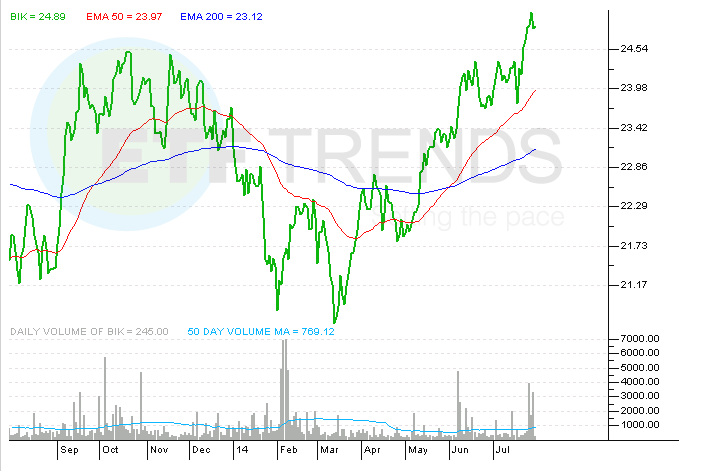Emerging Market ETFs Which One s Right for You (DEM EEM EMB SCHE VWO)
Post on: 3 Август, 2015 No Comment

During the decade of the 2000s, returns on U.S. stocks were pretty bad. With bear markets from 2000 to 2002 and again in 2008 and early 2009, many investors fled to international investments. To cash in on huge growth in China, India, Brazil, and other up-and-coming national economies, emerging market ETFs rapidly gained in popularity because of their high returns.
As a result of that popularity, many new emerging market ETFs have come onto the market in the past 10 years. With so many choices, deciding which fund is best for you can be a big challenge. In this article, we’ll take a look at some of the most well-known emerging market ETFs, as well as some smaller funds that are worth a closer look .
The groundbreaker: iShares MSCI Emerging Markets ( NYSEMKT: EEM )
This popular emerging markets ETF first came to market in 2003. Tracking the MSCI Emerging Markets Index, the iShares ETF includes stocks from many different countries, with companies located in China, South Korea, Brazil, and Taiwan making up more than half of the fund’s assets. A quarter of the fund is allocated to financial stocks, with technology, energy, and materials sectors also making up more than 10% each of fund assets.
With stocks that include Samsung, Taiwan Semiconductor. and China Mobile. the iShares ETF has managed to do a good job of tracking its index. But one place where the ETF doesn’t excel is in its expense ratio, which is a relatively high 0.67% annually. Nevertheless, the ETF has nearly $42 billion under management and is particularly favored among institutional investors.
The challenger-turned-champion: Vanguard MSCI Emerging Markets ( NYSEMKT: VWO )
Vanguard came out with a competing emerging markets ETF in 2005. With the Vanguard ETF tracking the same MSCI Emerging Markets Index that the iShares ETF does, you’ll see essentially the same allocations to countries and individual stocks in both.
The difference, though, is that Vanguard charges a much lower expense ratio of 0.20% annually. The savings over the iShares ETF amounts to $47 per year for every $10,000 you invest in the fund — a not-insignificant amount. Because of the savings, Vanguard has steadily risen in popularity, and with $71 billion in assets, it now has substantially more assets under management that its iShares counterpart.
Recently, though, Vanguard decided to change the index its emerging markets ETF will track. Rather than sticking with the MSCI index, the ETF will follow a similar FTSE index. As a result, the funds’ portfolios will look a lot different once the transition takes place. The move has angered some investors, especially institutions that specifically want to track the MSCI index. But Vanguard argues that the move will lead to further fee reductions, benefiting investors.
Honorable mentions
Several emerging market ETFs also deserve mentioning. The WisdomTree Emerging Markets Equity Income ETF ( NYSEMKT: DEM ) focuses on an index that gives greater weight to stocks that pay higher dividends. As a result, it’s skewed more toward banks, energy, materials, and telecom stocks, and Taiwan, China, and Russia have the three largest country weightings in the ETF. It also has a much higher dividend yield than the iShares or Vanguard ETFs, although it carries a fairly expensive 0.63% expense ratio.
The Schwab Emerging Markets Equity ETF ( NYSEMKT: SCHE ) is much smaller than the other funds mentioned here, but it has an extremely low price tag of just 0.15% in annual expenses. It tracks the FTSE All-Emerging Index and has more than 600 stocks in its portfolio, but its smaller size can create liquidity problems. For instance, yesterday, the ETF closed at a premium of more than half a percent, meaning that shareholders had to pay an extra half-percent above the value of the ETF’s underlying assets to obtain shares. With larger ETFs, such discrepancies are typically arbitraged away.
Finally, emerging market ETFs aren’t just about stocks. The iShares JPMorgan USED Emerging Markets Bond ETF ( NYSEMKT: EMB ) owns bonds issued mostly by emerging market countries, with some corporate bonds also thrown in. With many income investors searching for higher yields, emerging market bonds have become popular, and the iShares ETF gives you a wide range of bonds in one package.
Emerge onto the emerging market scene
Even as emerging market economies have slowed down, it still makes sense to have at least some exposure to stocks outside the U.S. markets. Emerging market ETFs make investing abroad easy, and by matching up your particular needs and wishes with what each ETF prefers, you’ll be sure to pick the one that’s best for you.
Emerging markets have promise, but they aren’t the only game in town. To learn more about a few ETFs that have great promise for delivering profits to shareholders in a recovering global economy, check out The Motley Fool’s special free report, 3 ETFs Set to Soar During the Recovery . Just click here to access it now.
Fool contributor Dan Caplinger owns shares of iShares MSCI Emerging Markets and Vanguard MSCI Emerging Markets. You can follow him on Twitter @DanCaplinger. The Motley Fool owns shares of China Mobile. Try any of our Foolish newsletter services free for 30 days. We Fools may not all hold the same opinions, but we all believe that considering a diverse range of insights makes us better investors. The Motley Fool has a disclosure policy .














